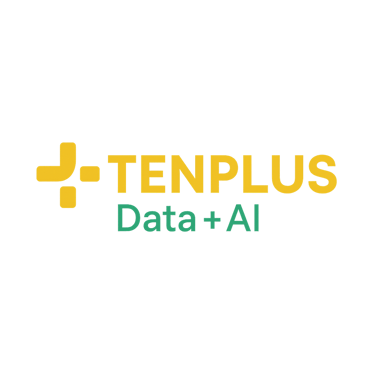Automating Customer Lifetime Value Analysis in the Financial Sector
A financial data analytics firm sought to modernize and automate their approach to Customer Lifetime Value (CLV) analysis. Previously, this process was handled manually by their Managing Director of Customer Growth, involving extensive use of spreadsheets, manual data cleaning, and repeated steps for each client engagement. The primary objective was to develop a robust, scalable engine capable of ingesting transaction data from various third-party sources (such as e-commerce platforms), automate the CLV modeling process, and produce actionable insights through dashboards — all with minimal manual intervention.
5/8/20242 min read
Sector: Finance
Duration: May 2024 – January 2025
Work Delivered
End-to-End Databricks Integration: Designed and implemented an automated data workflow using Databricks, encompassing ingestion, transformation, modeling, and dashboarding.
AWS Infrastructure Setup: Established a secure, scalable Databricks workspace within AWS, aligned with the client’s cloud strategy.
Automated Pipelines: Created automated data pipelines to handle new client data, reducing manual input and turnaround time.
Machine Learning Model: Built and integrated custom CLV models capable of handling varying transaction behaviors across clients.
Airflow Orchestration: Deployed Apache Airflow to orchestrate and monitor the full data lifecycle, from ingestion to dashboard publication.
People
Managing Director, Customer Growth – LinkedIn Profile
Sponsored the project and served as the primary subject matter expert. Although not technical, she played a key role in guiding the CLV strategy and outcomes.Product Manager – Acted as the consistent point of contact, coordinating feedback and approvals.
Support Engineers – Occasionally assisted with AWS access and environment setup.
Pressure
Reliance on Excel made processes tedious and error-prone
Manual steps led to inconsistent results and delays
No data lineage to track how insights were generated
Each client required a full rework of the same manual process
Delivering value to clients was slow and inefficient
Impact of Automation:
Enabled faster iterations and reduced turnaround time
Significantly decreased human errors
Created a consistent, reliable, and traceable system
Program/Project
The project was driven by the client's product manager, who coordinated feedback and approvals.
Technical decision-making, architecture, and implementation were fully owned by the consulting team.
The client focused primarily on the output (CLV insights and reports), not on the underlying technology stack.
Minimal technical support was needed from the client’s side, other than provisioning access and clarifying domain concepts.
Problems and Pains (Pre-Project)
Slow delivery of insights to clients
Frequent data quality and cleansing issues
Lack of centralized data management and history
No automation, causing repetitive and time-consuming processes
Quantified Impact of Pre-Project Pain Points:
Client delivery time dropped from months to days
Data cleaning time reduced from days to a few hours
Manual data logs replaced by a centralized, queryable data repository
Laid the groundwork for data governance and compliance
Promises
Implemented an error-free, fully automated process from data ingestion to dashboard delivery
Created a reusable and modular system that can easily be scaled to serve new clients
Problems and Pains (In-project)
Understanding the CLV model and its business logic was challenging
Translating domain-specific finance insights into technical implementations required extensive collaboration
The main sponsor, while highly knowledgeable, was not technical, which extended the onboarding of domain logic
How These Were Overcome:
Conducted structured working sessions at each phase to align business understanding with technical implementation
Developed prototypes early and iterated with feedback
Created documentation and visual guides to bridge knowledge gaps
Payoffs
For Stakeholders:
Reduced client onboarding time from 2-3 months to just 3 weeks
Gained access to centralized historical data, enabling long-term value tracking and future AI integration
Simplified client management by standardizing the delivery process
For the Company:
Increased client satisfaction and confidence due to timely and consistent delivery
Enhanced ability to scale operations and take on more clients without increasing internal workload
Positioned the company for future data-driven innovation

